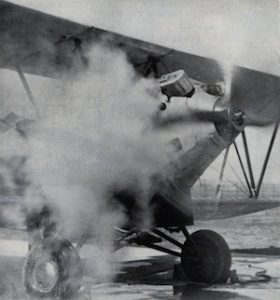
A Travel Air 2000 biplane made the world’s first steamed flight over Oakland, California on April 12, 1933. The strangest feature of this flight was its relative silence; spectators on the ground could hear the pilot as he called to them from the sky. The plane, piloted by William Besler, had been equipped with a 150-horsepower, two-cylinder reciprocating engine. A major contribution to its design was made by Nathan C. Price, a former engineer at Doble Steam Motors.
Price was working on compact high-pressure engines for rail and road transport; the purpose of the flight was to get publicity for this work. After an unexpectedly favorable reception, Price joined Boeing and worked on various aviation projects, but Boeing abandoned the idea of a steam-powered aircraft in 1936. Price then went to work for Lockheed, where his experience in developing compact burners for steam boilers helped him develop Lockheed’s first jet engine.
The advantages of the “Besler system” that were claimed at the time included:
– The elimination of audible noise and destructive vibration
Greater efficiency at low rpm and high altitude, where lower air temperatures promote condensation.
– Less engine failure
– Reduced maintenance costs
– Reduced fuel costs, since fuel oil was used instead of gasoline
– Reduced risk of fire, since the fuel was less volatile and the engine was lighter and operating temperatures are lower
– No need for radio shielding.
For capacities above 1000 horsepower, a turbine captures the energy released by the expansion of steam more efficiently than a piston. Thus, the steam reciprocating engine proved to be unsuitable for the needs of large aircraft.


